Summary:
- With attention being taken by the time it is taking to open Willy Brandt Berlin Brandenburg Airport, the fact that the German capital is seriously under-represented by long-haul air services has missed;
- There's a mix of external factors (inadequate tourism, loss of status as a World City, equally important cities dotted around the country) and internal ones (airberlin's failure and Lufthansa lack of growth in Berlin) that weigh on the equation;
- There is a clear opportunity for an airline to become established as Berlin's long haul airline, but until the continuing saga of its new airport is resolved, this is unlikely.
While Berlin's new hub airport is currently scheduled to open in Oct-2020, nine years late, and initially postponed because of some problems with the fire alarm system, remarks made by the Minister for Transportation recently - "I'm no civil engineer but there is still a lot to be done" - doesn't instil much confidence that even that date can be achieved.
It may not 'yet' have its major new airport, but while its short haul activity is booming it surprisingly doesn't necessarily have the long haul demand to support a city of its standing. Flughafen Berlin Brandenburg GmbH (FBB) recently reported long haul routes served by Berlin's two airports have actually decreased by 76% in the past 10 years - and the level then wasn't great to start.
A surprise for sure, after all Berlin is not only the most populous city proper in Germany (3.7 million people) but the second most populous in the Europe Union with the seventh biggest EU urban area. Significant industries include IT, pharmaceuticals, biotechnology and electronics. It is a World City in respect of science and media, and of politics as the capital of the country with the largest economy in Europe and the fourth largest in the world; the third largest exporter and importer. But there are several possible contributory factors.
Comparing tourist figures is not easy as they are calculated in different ways but it appears that Berlin trailed Paris, London , Rome and Madrid (just) in the number of overseas tourist visitors in 2017. It may not be as popular as it thinks it is. Its local rival Hamburg is catching it with 3.5 million foreign visitors last year.
CHART - Berlin ranks behind Madrid and Rome, has around half the foreign visitors recorded by Paris and around a third of the level seen by London, based on 2017 arrival statistics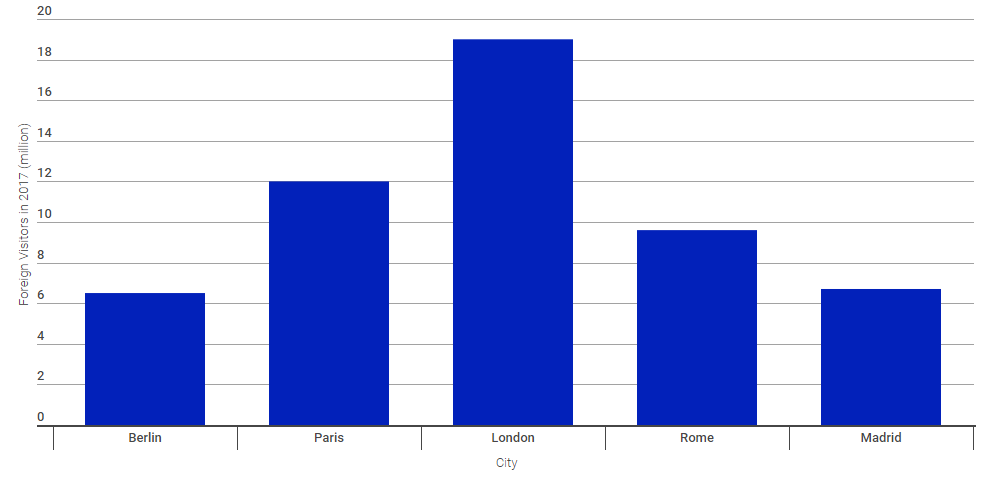 Source: The Blue Swan Daily
Source: The Blue Swan Daily
Another reason for low long haul figures might be that in the context of globalisation Berlin is only classed as a Beta World City in the listings administered by the Globalisation and World Cities Research Network at the UK's Loughborough University. Beta is the sixth ranking grade (of 10 rungs in all) and puts Berlin alongside, believe it or not, Casablanca, Nicosia, Bratislava, Manama and Sofia. Rome is one rung above it; Madrid three; Paris four; and London five.
Yet another factor is that there is distributed demand around Germany, far more so than in most other European countries. Financial sector demand is centred on Frankfurt, whose airport, owing to its fairly central position, acts as the country's main international hub; technological industry demand around Munich, where the airport acts as a secondary hub; and heavy industry demand in the Ruhr area near Düsseldorf.
Meanwhile, Hamburg has replaced its dependence on its port with a growing presence in the air transport sector as it develops its own commercial and tourism identity (rivalling Berlin) as the natural entry point to the country from the north and west.
MAP - Berlin is Germany's political capital located in the northeast of the country on the banks of the rivers Spree and Havel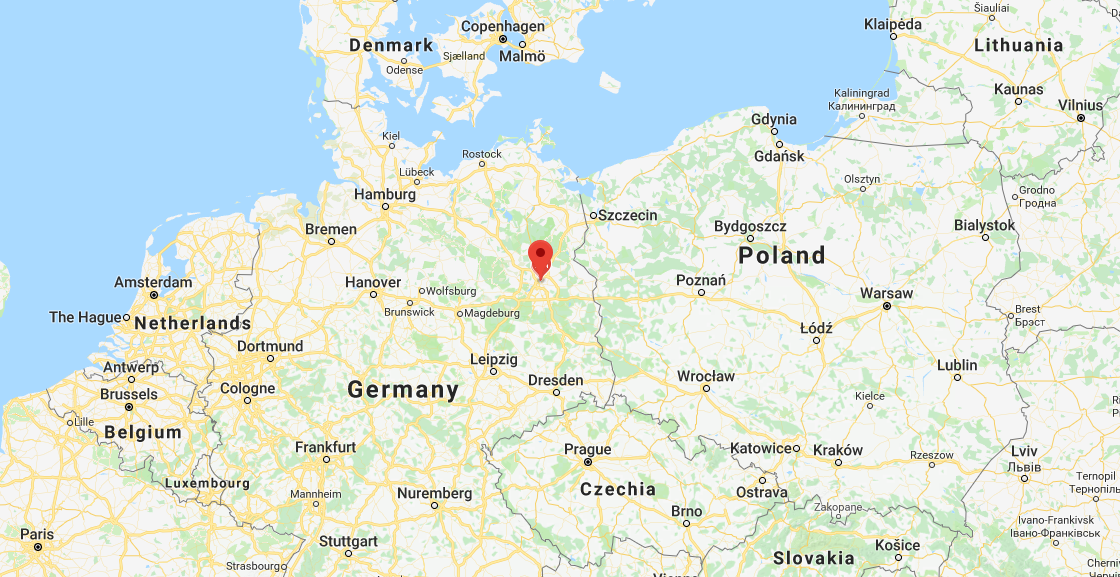 Source: Google Maps
Source: Google Maps
In contrast Berlin sits rather forlornly in the old East Germany, a region that has still not caught up with the old 'West' economically, on the road to nowhere as it straddles the Hamburg - Poznań-Warsaw highway.
Against a back drop of airport delay stories Schönefeld has grown significantly, while Tegel has slipped in scale, partly driven by the bankruptcy of airberlin in Aug-2017. Capacity has now been partly backfilled, but still growth rates were down in 2017, slipping into negative regions in the year to date.
CHARTS - Berlin's airport have had a mixed decade, but both Tegel (top) and Schönefeld (bottom) have seen traffic levels decline during the year to date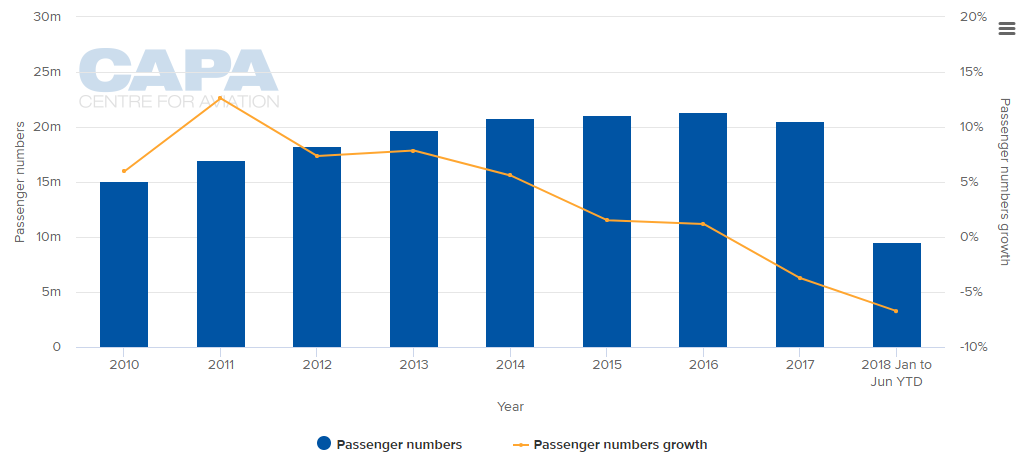
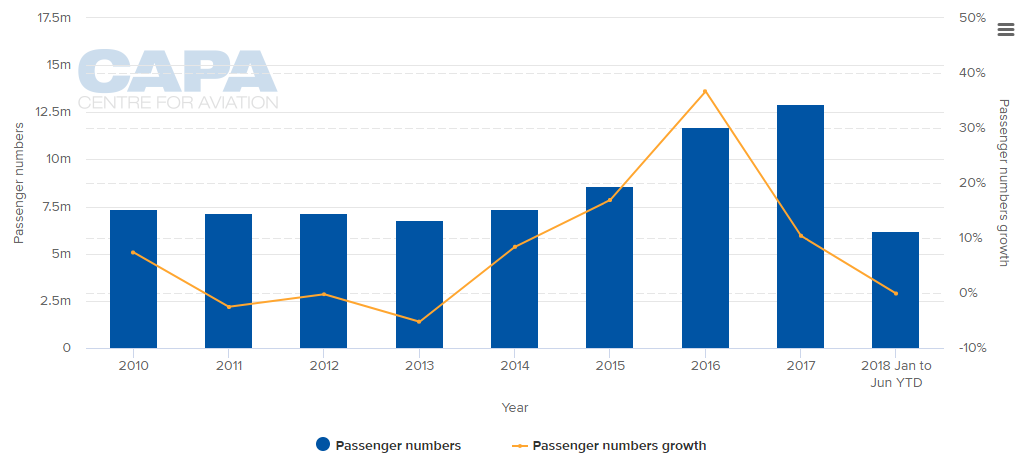 Source: CAPA - Centre for Aviation and Flughafen Berlin Brandenburg
Source: CAPA - Centre for Aviation and Flughafen Berlin Brandenburg
It is clear that the airberlin void has not been adequately replaced: the airline that really should have done that, Lufthansa, still puts most of its eggs in two baskets - Frankfurt and Munich. Indeed, Lufthansa no longer has any long haul routes from either of the Berlin airports, and no international routes at all for that matter. Right now it only flies from Tegel to Frankfurt and Munich, its two main hubs, and not at all from Schönefeld.
CHART - Berlin Tegel may be Lufthansa's third largest network point, it only accounts for just 2.0% of its capacity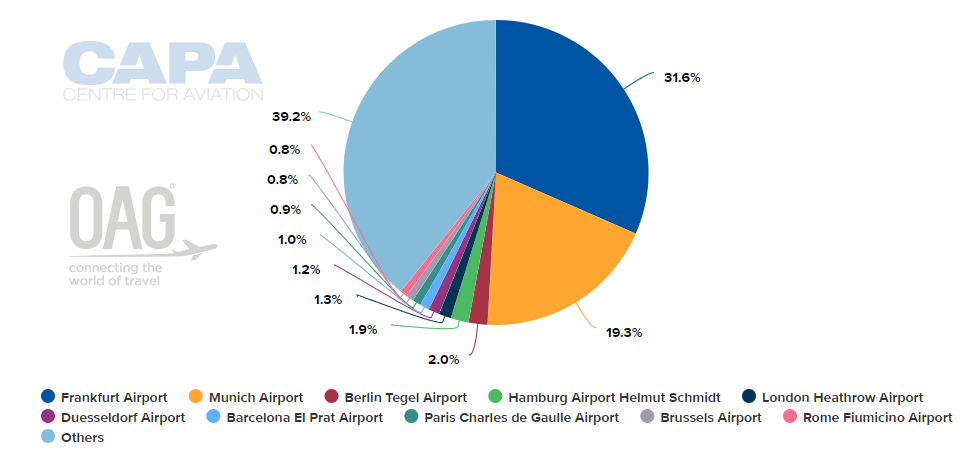 Source: CAPA - Centre for Aviation and OAG (data: w/c 23-Jul-2018)
Source: CAPA - Centre for Aviation and OAG (data: w/c 23-Jul-2018)
If it seems incredible that a flag carrier should seemingly care so little for its capital city, foreign airlines have hardly stepped up to the plate. Currently only Air Canada Rouge (Toronto), Delta Air Lines (New York), EgyptAir (Cairo), Hainan Airlines (Beijing), MIAT (Ulaanbaatar), Qatar Airways (Doha), Scoot (Singapore) and United Airlines (Newark) fly medium or long haul from Tegel, while El Al will this winter replace its Up! division to Tel Aviv and EgyptAir serves Cairo from Schönefeld. The upshot of all this is that Berlin is well behind peer cities in Europe where long haul is concerned.
So there are both external factors (inadequate tourism, loss of status as a World City, equally important cities dotted around the country) and internal ones (airberlin's failure and Lufthansa's focus elsewhere in Germany) that weigh on the equation. What Berlin really needs is an entrepreneur, the likes of a Branson or O'Leary, or Kjos, or Fernandes, or even a Laker, who started his career running the Soviet blockade of West Berlin in the late 1940s, to help put it on the intercontinental map. But there is no sign of that happening. The continuing saga of the new airport does nothing to build confidence in the city.